THE POLEROUTER AND THE FIRST TRANSPOLAR FLIGHT
Navigating polar frontiers
In 1954, Scandinavian Airlines radically reduced travel time between the U.S. and Scandinavia when it rewrote the map and flew over the North Pole. This exotic route, which quickly became the travel-of-choice for celebrities and heads of state, is also the story of how the Polerouter, one of Universal Genève’s most famous models, took off and forever secured a sky-high place in the minds of collectors.
Spoiler alert to flat-Earthers: This article deals with the fact that the Earth is round and therefore you should sometimes consider going North when you are heading West. That the shortest route between Scandinavia and Los Angeles runs via the magnetic North Pole is no secret to those who accept that our planet is a sphere.
Beginning in the 1920s, the U.S. Air Force flew over the North Pole. But in the early 1950s when Scandinavian Airlines System (SAS) wanted to make a commercial passenger route via the North Pole, the airline faced several technical challenges. Not only do magnetic compasses become as useless as chocolate teapots as soon as you get within 1,000 kilometres of the magnetic North Pole, the convergence of the meridians also makes it impossible to orient yourself using classic navigational tools.

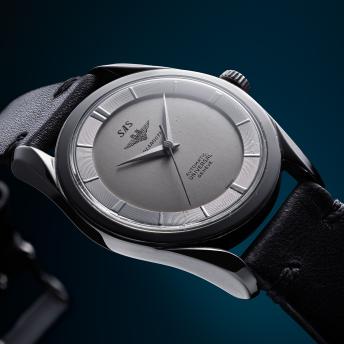
Around the same time, Scandinavian Airlines reached out to Universal Genève to see if the Geneva watchmaker would be interested in making a timepiece that would commemorate and celebrate this new adventurous path in commercial aviation. The commission led to the advent of the icon we know as the Polerouter – originally launched as the Polarouter – in 1954 and introduced the world to the genius of a young watch designer named Gérald Genta.
The Polerouter is, to this day, one of the most famous models Universal Genève ever produced. The original Genta design was distinctive due to its three-dimensionality. In a patented solution, the exterior metal ring of the dial is, in fact, attached to the bezel, hovering over the central dial fixed to the movement. With this solution, the watch was water and dust-resistant. And, given its polar purpose, made to be shock-proof and anti-magnetic. This was all summed up in Universal Genève’s advertising at the time, which stated: “to withstand climactic conditions – from the Pole to the Equator.”

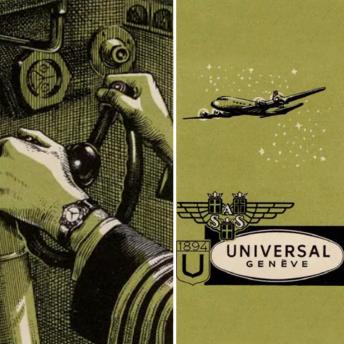
A flight to save time and miles
Let’s go back to the events leading up to that historic transpolar flight. Around the late 1940s, a team led by SAS Navigator Einar Sverre Pedersen started working on solutions to the navigational challenges of crossing the Pole. With welcome assistance from the U.S. Air Force, they constructed a new type of map called the SAS Polar Grid System, replacing the meridians with parallel lines. This was also an era of several new inventions in aeronautics.
Together with a company called Bendix, SAS developed a new Gyro system called Polar Path Gyro, which permits navigation with the aid of a predetermined star. These groundbreaking systems replaced the meridian lines with parallel lines, which made it possible to navigate along a straight, absolute path despite the rotational aspects and drifts that pilots normally battled with at these latitudes. Of course, there were instrumental clocks in the plane used for navigational purposes, but the Polerouter’s reliability and precision made it a precious – and stylish – backup.
On November 15, 1954, after several test attempts, the Los Angeles-bound maiden flight along the new route took off from the Copenhagen tarmac. Prominent journalists and three Scandinavian prime ministers; Hans Hedtoft of Denmark, Tage Erlander of Sweden, and Oscar Torp of Norway were among the passengers on the luxuriously equipped Douglas DC-6B.
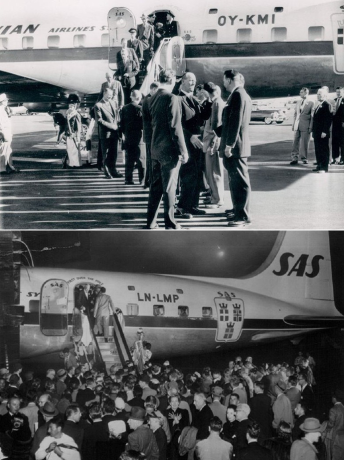
Simultaneously, a similar carrier left L.A. bound for Copenhagen, marketed by SAS as “the first new route to Europe in a thousand years.” After stopovers in Greenland and Canada, the planes landed more-or-less simultaneously. The flight to America landed within three minutes of the estimated ETA.
Upon landing, the prime ministers are said to have received one watch each. Unfortunately for historians, this has not been substantiated with archival evidence. There is, however, evidence of SAS crew members wearing these watches at the Los Angeles airport in photos that were to be used for one of SAS’s many campaigns based on its new polar route.
Around 170 watches were made in the first series, many of which would be gifted to SAS captains, whether they were flying over the pole or not. Interestingly, these early models are easy to spot, as they have three tell-tale signs: the dials are branded with the SAS logo, the name written on the dial is Polarouter (emphasis on the “a”), and they have no date window.

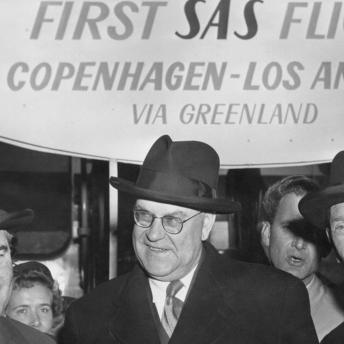
The rebranding to Polerouter took place in 1956. And two years later, the Polerouter got a proper mechanical upgrade from the so-called bumper movement, where the rotor oscillates between two shock absorbers. This was replaced with the groundbreaking “Microtor,” one of the world’s first micro-rotor movements. With a height of just 4.1mm, it was then one of the world’s thinnest automatic calibers. Before the upgrade, its durability and reliability had been properly tested on a Franco-Swiss expedition to Greenland, where four Polerouter Microtors were worn under gruelling conditions to scale 10 summits. Upon their return, the watches showed almost no deviation.
A jet-age icon reborn
America was not the be-all and end-all of SAS polar route aspirations. On February 24, 1957, the airline inaugurated its next polar route – Copenhagen to Tokyo. The modus operandi of this maiden voyage was similar to 1954, with simultaneous departures from both cities and several celebrities on board, including the Prince and Princess of Japan. This route was equally radical in cutting travel time from 50 hours down to 32 hours.
In parallel with this development in aviation, the Polerouter went through an evolutionary phase with models like the Polerouter De Luxe in gold and Polerouter Date, equipped with a date window. These two were close to the original but would be followed by new case and dial designs, including concave dials without the “second layer” dial attached to the bezel. The collection would eventually also have a watch dedicated to diving, the Polerouter Sub.
On November 15, 2024, coinciding with the 70th anniversary of the maiden SAS polar route voyage, Universal Genève unveiled three newly designed Polerouters powered by original 1960s Microtor movements. They are ticking proof that the aviation and horological innovation of the 1950s continues to inspire to this day – all around the world.
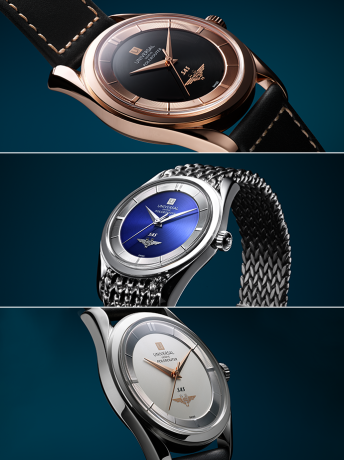

Add new comment